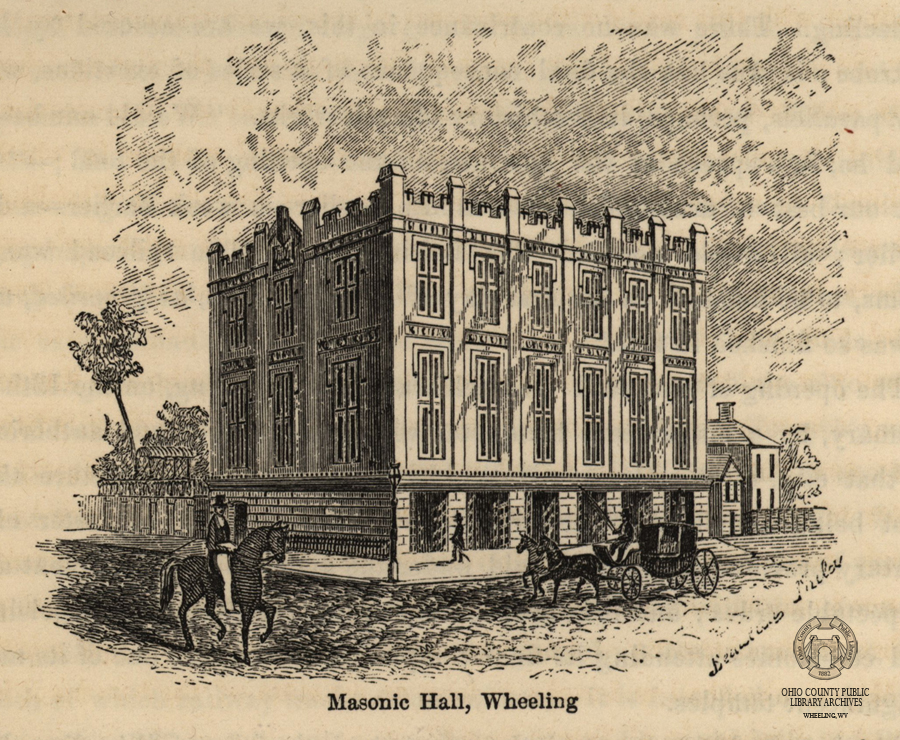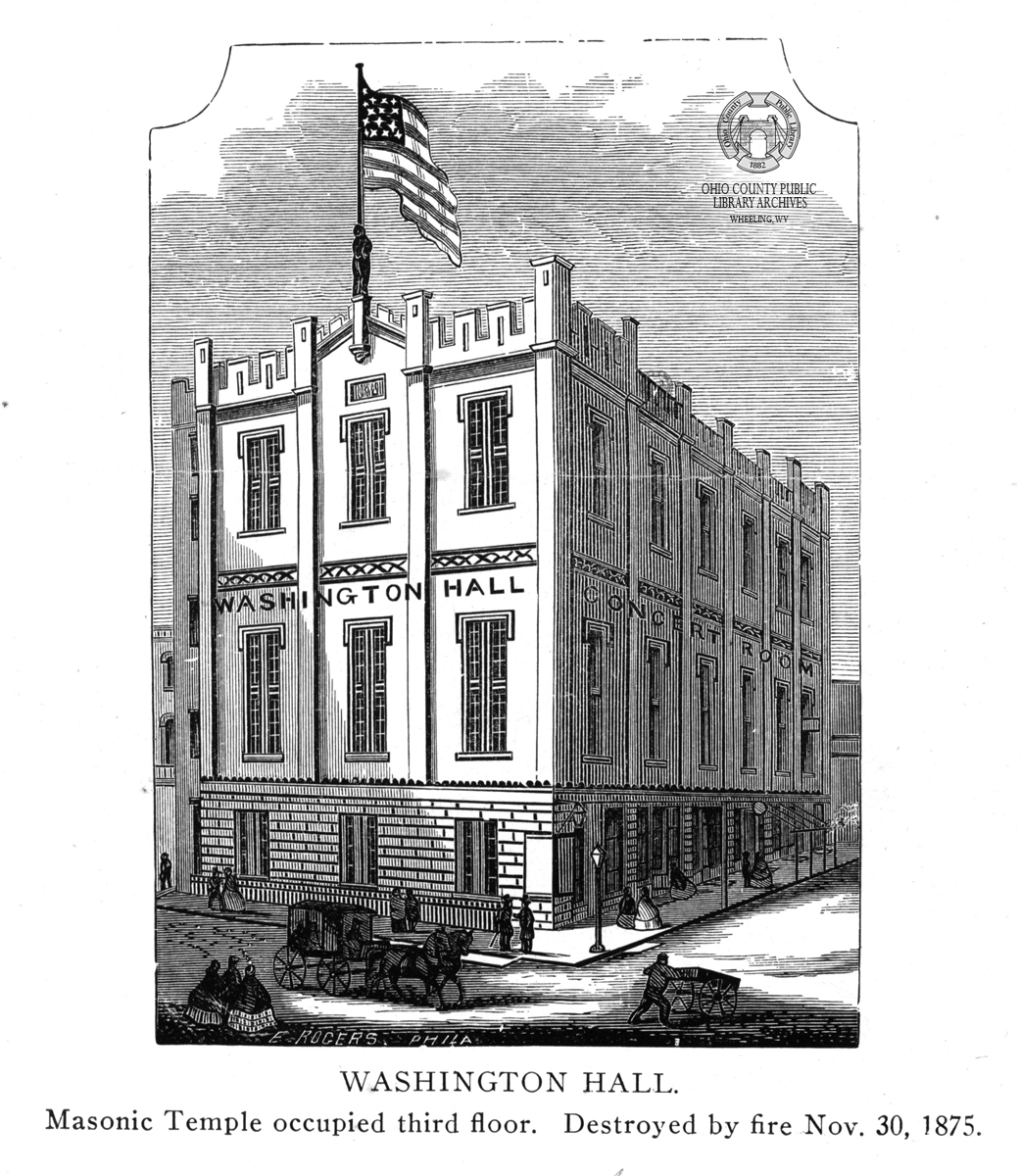First Wheeling Convention
The First Wheeling Convention met in Wheeling, May 13-15, 1861, to decide western Virginia’s response if Virginia seceded from the United States.
News that members of the Virginia Secession Convention had voted 88-55 on April 17 to submit an Ordinance of Secession to the state’s voters created confusion, fear and anxiety in western counties. Some local governments collapsed, and armed bands gathered to support one side or the other in the ratification vote scheduled for May 23, 1861. The Confederate States of America had been created, and the question was whether Virginia would secede and join the Confederate States or remain with the United States. Mass meetings and conventions had been held to discuss the momentous events of 1860 and 1861, and there was strong sentiment in the western counties to create a new state if Virginia decided to secede.
The most significant of these preliminary conventions, led by John Carlile, was held in Clarksburg on April 22, 1861. Carlile, a prominent and outspoken Unionist, had been a delegate to the Secession Convention where he voted against secession. The Clarksburg Convention adopted a Preamble and Resolutions calling for “the people in each and all of the counties comprising Northwestern Virginia” to appoint five men to meet in convention on May 13, 1861. The resolution included the hope that the May convention would “determine a course of action as the people of Northwestern Virginia should take in the present fearful emergency.” The call for a convention was publicized by western newspapers such as the Western Virginia Guard (Clarksburg) and the Wheeling Intelligencer.
The convention was held in Wheeling and is known as the First Wheeling Convention. Though the immediate purpose was to address the secession crisis, some residents of western Virginia saw it as an opportunity to create a new state. Sectional differences had stimulated a desire for separate statehood in the western counties for almost as long as the state of Virginia had existed, and the crisis in 1861 presented an opportunity to act on that desire. The most immediate problem facing the First Wheeling Convention was to determine if it was just another mass meeting or a convention taking on official powers. If the latter, were the delegates properly chosen so as to be representative of the people? The first problem was settled when the delegates endorsed the Clarksburg resolutions calling for a convention. After much discussion on the legitimacy of delegates and the appointment of a credentials committee, it appears that the other issue was resolved by seating most if not all the 436 delegates.
Once the organizational details were resolved, John Carlile and others proposed the creation of a new state from the western part of Virginia. More conservative members advocated no action until the vote on the Ordinance of Secession was known, and Carlile reluctantly agreed to the delay. The convention then resolved to meet again on June 11, 1861, if the Ordnance of Secession passed. In that case, the counties of northwestern Virginia were to choose delegates on June 4 to represent them at the June 11 meeting.
As expected, the Ordinance of Secession was approved by a majority of Virginia voters on May 23. In response, the Second Wheeling Convention convened in June, setting in motion actions which resulted in the creation of the state of West Virginia.
Though the long-term effect of the First Wheeling Convention was to create a climate leading to the “dismemberment of Virginia” by the creation of the new state of West Virginia, the immediate impact was to start a process for preserving law and order in a region where the survival of civilized society was in danger. Northern and southern sympathizers were competing to recruit militia units for their respective causes, and vigilantism threatened the peace and stability of the western counties. Led by prominent citizens, the public meetings, and conventions paved the way for a new government to be put in place if secession became a reality.
- Bailey, Kenneth R. "First Wheeling Convention." e-WV: The West Virginia Encyclopedia. 25 August 2015. Web. 21 July 2016.
▶ Read about the Second Wheeling Covention
Newspaper Articles
▶ Coming Soon
Images of Washington Hall
The First Wheeling Convention was held at the first Washington Hall, also known as the Masonic Hall (the Masons occupied the third floor of the hall). It was located on the corner of 12th and Market, across the street from the McLure Hotel.

- image from "Rambles in the Path of the Steam-Horse," Eli Bowen, 1855. Ohio County Public Library Rare Books Collection.

- image from the collections of the Ohio County Public Library Archives

